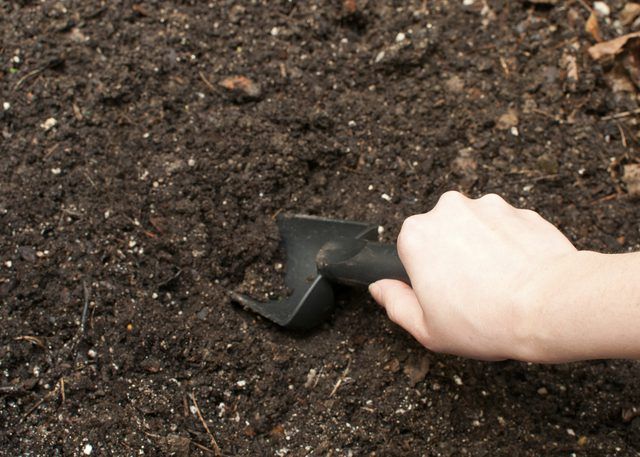Bulbs
Flower Basics
Flower Beds & Specialty Gardens
Flower Garden
Garden Furniture
Garden Gnomes
Garden Seeds
Garden Sheds
Garden Statues
Garden Tools & Supplies
Gardening Basics
Green & Organic
Groundcovers & Vines
Growing Annuals
Growing Basil
Growing Beans
Growing Berries
Growing Blueberries
Growing Cactus
Growing Corn
Growing Cotton
Growing Edibles
Growing Flowers
Growing Garlic
Growing Grapes
Growing Grass
Growing Herbs
Growing Jasmine
Growing Mint
Growing Mushrooms
Orchids
Growing Peanuts
Growing Perennials
Growing Plants
Growing Rosemary
Growing Roses
Growing Strawberries
Growing Sunflowers
Growing Thyme
Growing Tomatoes
Growing Tulips
Growing Vegetables
Herb Basics
Herb Garden
Indoor Growing
Landscaping Basics
Landscaping Patios
Landscaping Plants
Landscaping Shrubs
Landscaping Trees
Landscaping Walks & Pathways
Lawn Basics
Lawn Maintenance
Lawn Mowers
Lawn Ornaments
Lawn Planting
Lawn Tools
Outdoor Growing
Overall Landscape Planning
Pests, Weeds & Problems
Plant Basics
Rock Garden
Rose Garden
Shrubs
Soil
Specialty Gardens
Trees
Vegetable Garden
Yard Maintenance
How to Make Soil More Alkaline
Before you try to make your soil more alkaline, test it to get an accurate pH reading. Amend by adding organic compost or limestone.

Just like you and your friends may like different food, plants have individual soil preferences. One of the big distinctions in soil requirements for plants is the alkalinity/acidity level. Some plants like acidic soil; others prefer soil that is alkaline. If you have acidic soil and alkaline-loving plants, you can increase soil alkalinity with compost or lime.
Soil pH Is Important
Soil pH is so essential to gardeners that botanists have developed an official scale (called the pH scale) to indicate where a particular soil falls on the range of acid to alkaline. The pH scale runs from 0 to 14, with 7 being neutral. The lower the pH, the more acidic the soil. The higher the pH, the more alkaline the soil.
Each garden plant has a preferred pH level. For example, annual potatoes (Solanum tuberosum) grow best in acidic soil, while perennial asparagus (Asparagus officinalis), which is hardy in U.S. Department of Agriculture plant hardiness zones 3 to 10, likes alkaline soil. Most garden plants grow happily in soil that is nearly neutral, and only a few prefer highly acid or highly alkaline soil.
A Soil Test Is Best
You should test your soil before you go to the trouble of changing the pH. You can either buy a home testing kit at your local hardware or garden store or collect a soil sample and send it to a university or cooperative extension lab. A lab-tested sample produces more accurate results, especially for alkaline soils.
Make sure to get a good soil sample, since the soil test results will only be as good as the soil sample collected. You need a composite sample that represents the average fertility of the entire growing area, not just a single corner.
Things You'll Need
Soil sampling probe or garden trowel
Bucket
Cup measure
Plastic bag or other soil kit container
Step 1
Insert a garden trowel into the soil about 6 inches and then remove it. Move the tool 1/2 inch away from the first cut and remove a thin slice of soil. Place it into a clean bucket.
Step 2
Walk in a random pattern over the test area. Stop to take similar samples in about 15 locations.
Step 3
Mix all the soil in the bucket until it is thoroughly blended. Move 2 cups of the soil from the bucket to the plastic bag or container associated with your soil testing kit. Complete the soil sample questionnaire, noting any issues you are having with plants in the area, and send it to the lab with the soil sample.
Step 4
Mix all the soil in the bucket until it is thoroughly blended. Move 2 cups of the soil from the bucket to the plastic bag or container associated with your soil testing kit. Complete the soil sample questionnaire, noting any issues you are having with plants in the area, and send it to the lab with the soil sample.
Reviewing Test Results and Amending Soil
Once you have your soil test results, compare your actual pH with your desired pH. If you only need to raise the pH a little bit, add several inches of organic compost to the soil and work it in well.
Compost is close to neutral in pH, so raising a soil's organic content moves the pH of soil, whether it is acidic or alkaline, toward neutral. If your pH reading is only slightly acidic, you may get the result you need by simply adding compost. Wood ash also works to raise pH.
Time for Lime
If you need to raise the pH more than a little, add lime the soil. Broadcast ground limestone around the area, work it into the top 6 inches of soil and then irrigate well. The amount to add depends on the current pH of the soil, the desired pH and the composition of the soil (whether it is sandy, loamy or clay).
For example, according to experts at Iowa State University, you need to add the following amounts of ground limestone to soil to change the pH of a 100-square-foot plot to 6.5.
Sandy Soil
If current pH is 5, add 8 pounds.
If current pH is 5.5, add 6 pounds.
If current pH is 6, add 3 pounds.
Loamy Soil
If current pH is 5, add 10 pounds.
If current pH is 5.5, add 8 pounds.
If current pH is 6, add 4 pounds.
Clay Soil
If current pH is 5, add 3 pounds.
If current pH is 5.5, add 4 pounds.
If current pH is 6, add 6 pounds.